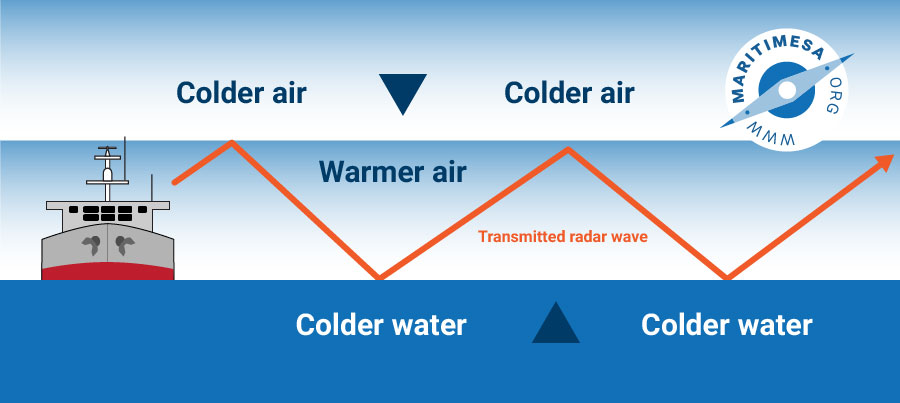Radar is referred to as an aid to navigation because it has certain shortcomings that could result in a collision or grounding if it is relied on exclusively. These shortcomings are:
- Size of target. Radio waves reflect very well from large objects but sometimes small objects are missed because of their size, shape or freeboard (small boats). The prevailing sea state could also adversely affect the region very close to the transmitting ship, because radio signals being reflected from the surrounding waves can saturate the radar receiver.
- Material. The radio waves reflect very well from metallic objects but less so from objects constructed of other materials, ie wood, glass fibre (pleasure craft) and ice. (icebergs/growlers).
- Nature of coast. Low lying, sandy coasts may not be clearly defined because of poor reflective qualities. On the other hand large dunes, mountains and higher rocky ground further inland could reflect very well and this could confuse the navigator as to his actual distance from the shore.
- Abnormal atmospheric conditions. Abnormal atmospheric conditions (ie ducting) also adversely affect the propagation of radio waves:
- Sub-refraction (when the air is colder than the sea surface) will bend the radar beam upwards, thus shortening the range.

Sub-refraction.
- Super refraction (when the air is warmer than the sea surface) will bend the beam downwards over the horizon, thus increasing the radar range.

Super refraction.
- Ducting (when two layers of air having different heat characteristics lie above the sea surface) cases the beam to be trapped in the lower layer and gives extraordinary ranges.

Ducting.
- Sub-refraction (when the air is colder than the sea surface) will bend the radar beam upwards, thus shortening the range.
Despite these shortcomings, radar is a very useful tool to the navigator both in detecting other vessels and objects at sea in adverse visibility and for coastal navigation.


